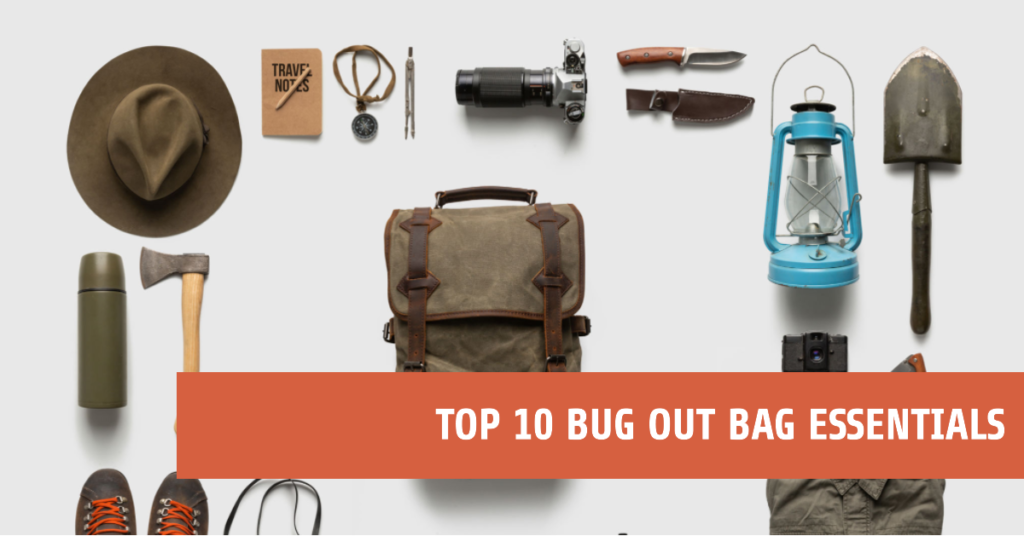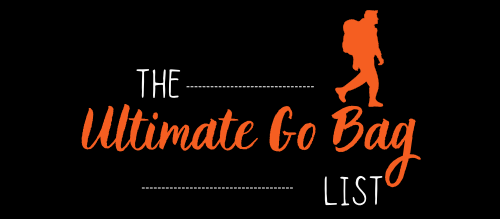
In a world of uncertainty, being prepared for unexpected emergencies is a smart move. Whether it’s a natural disaster, civil unrest, or an unforeseen crisis, having a well-stocked bug out bag can make all the difference in your survival and well-being. With countless items available and numerous factors to consider, deciding what to include in your bug out bag can be overwhelming. To help you make an informed decision and prioritize what’s truly essential, we’ve compiled a list of the top 10 bug out bag essentials that can significantly increase your chances of success during an emergency.
These items have been carefully selected based on their usefulness, versatility, and practicality, ensuring you are equipped with the most critical supplies when you need them most. By focusing on these essentials, you can create a solid foundation for your bug out bag, leaving you more prepared and confident in the face of adversity. So, let’s dive in and explore these crucial items that can make all the difference when disaster strikes.
Top 10 Bug Out Bag Essentials
Water and Hydration
Water is vital for survival. Carry water in bottles or hydration systems. Purify water with filters or purification tablets. In addition to carrying water and purification methods, consider including electrolyte replacement solutions or tablets. These help replenish essential minerals and prevent dehydration during strenuous activities. Collapsible water containers are useful for storing and transporting water when access to water sources is limited. Research local water sources along your evacuation route and mark them on your map. Regularly inspect your water purification equipment to ensure it is functional and within its expiration date.
Food and Nutrition
Non-perishable, calorie-dense food is crucial. Consider energy bars and freeze-dried meals. Pack lightweight cooking equipment, if needed.
When selecting food for your bug out bag, consider the shelf life and nutritional content. Opt for foods with minimal preparation needs, such as dehydrated meals, canned goods, or meals ready to eat (MREs). Mountain House Adventure Meals are a great option that comes in a variety of flavors and sizes.
Include a lightweight, compact stove and fuel to heat meals or boil water. Utensils like a spork and a small pot or pan are useful for cooking and eating. Remember to rotate food items before they expire and update your bag with seasonal considerations, such as swapping out food items that may freeze or melt in extreme temperatures.
Shelter and Warmth
A compact, lightweight tent or tarp can provide additional shelter and protection from the elements. Consider the climate and weather conditions in your area when choosing shelter materials. A sleeping bag or sleeping pad adds insulation and comfort when resting. Include extra socks, gloves, hats, and other clothing items to maintain warmth, especially in colder climates. Hand warmers, chemical or rechargeable, can provide a temporary heat source. Ensure your emergency clothing is suitable for your local climate and consider seasonal changes.
Emergency shelters protect from elements. Options include emergency blankets, lightweight tarps, and bivy sacks.
Clothing
In an emergency situation, you may not have access to clean clothing for an extended period. Pack extra clothing in your bug out bag to help you stay warm, dry, and comfortable. Consider including:
- Moisture-wicking base layers for temperature regulation
- Extra socks and underwear
- A lightweight, waterproof jacket for protection against rain
- Gloves and a hat for added warmth
Choose clothing items that are durable and made from materials that dry quickly. Remember to update your clothing selection based on seasonal changes.
First Aid and Medical
Maintaining personal hygiene and sanitation during emergencies can prevent infections and help you stay healthy. Pack essential hygiene items in your bug out bag, such as:
- Wet wipes and hand sanitizer for cleaning hands and body
- A toothbrush and toothpaste for oral hygiene
- Feminine hygiene products, if applicable
- A small pack of tissues or toilet paper
- A compact towel for drying off
Additionally, pack a small bag for waste disposal to help maintain cleanliness in your temporary shelter.
A basic first aid kit is essential. Customize for individual needs and medical conditions. Learn to use the items effectively. In addition to a well-stocked first aid kit, consider including specific medications and supplies for any pre-existing medical conditions you or your family members may have. Include items such as prescription medications, spare glasses or contact lenses, and specialized medical equipment. A compact first aid manual or reference guide can be helpful in emergency situations when medical assistance may not be readily available. Add a small supply of over-the-counter medications like pain relievers, antihistamines, and anti-diarrheal tablets. Regularly check the expiration dates of medications and replace them as needed.
Tools and Equipment
Multi-tools or knives are versatile for survival tasks. Fire-starting tools include matches, lighters, and ferrocerium rods. Paracord or rope is useful for various purposes.
Beyond basic tools like a multi-tool or knife, consider including specialized tools for your environment or specific tasks. A folding saw or hatchet can help with cutting wood, while a compact shovel or trowel can assist in digging or clearing debris. Repair kits, like duct tape or a sewing kit, help with equipment maintenance and repair. A portable solar charger can keep devices charged during extended periods without access to power. Familiarize yourself with the tools in your bug out bag and practice using them in various scenarios to build confidence and proficiency.
Lighting and Visibility
Flashlights or headlamps provide illumination. Carry extra batteries. Use an emergency whistle for signaling. A signaling mirror aids in rescue attempts. Multiple light sources, such as a headlamp and a compact flashlight, provide redundancy and versatility for various tasks. LED lights offer energy efficiency and longer runtimes compared to traditional bulbs. Backup batteries and a portable solar charger can help maintain power for your devices. A hand-crank or battery-operated lantern can provide additional light for your shelter or campsite. Glow sticks are a lightweight, non-electric option for emergency lighting or signaling. Regularly test your lighting devices and replace batteries as needed.
Navigation
In times of crisis, having essential documents readily available can be critical. Keeping physical and digital copies of important documents in your bug out bag ensures you have quick access to them when needed. Some vital documents include:
- Identification (e.g., driver’s license, passport)
- Medical records and prescription information
- Insurance documents
- Contact information for family members and emergency contacts
- Maps of local area and evacuation routes
Protect these documents in waterproof bags or containers, and consider encrypting digital copies for added security.
Local maps and compasses guide through unfamiliar terrain. Advanced navigation tools like GPS devices are optional. Learn basic navigation skills. In addition to a map and compass, consider including a GPS device or smartphone with offline maps to assist in navigation. Research and familiarize yourself with potential evacuation routes and alternative paths to reach safety. Mark locations of interest on your map, such as water sources, shelters, or potential hazards. A waterproof map case or protective cover can help keep your map in good condition. Take the time to learn and practice basic navigation skills, such as reading a map, using a compass, and identifying landmarks.
Communication and Signaling
Two-way radios or satellite communicators help maintain contact. Use a multiband emergency weather radio for critical updates. Signaling devices attract attention and aid. Having multiple communication options is crucial in emergency situations. A portable, battery-operated or hand-crank radio allows you to receive weather updates and emergency information. Two-way radios or walkie-talkies can help maintain communication within your group or with others nearby. A whistle or signal mirror is useful for attracting attention or signaling for help. Consider investing in a satellite phone or personal locator beacon (PLB) for situations where cell service is unavailable. Regularly test communication devices and replace batteries as needed.
Personal and Important Documents
Keep copies of identification, insurance, and emergency contacts. Carry spare cash or local currency. Pack necessary prescription medications.
In addition to physical copies of essential documents, consider scanning and storing them digitally on a secure, waterproof USB drive or cloud storage service. This can help with document recovery if originals are lost or damaged. Include a small notebook or waterproof paper and a pen or pencil for taking notes, recording important information, or leaving messages for others. Prepare a list of emergency phone numbers and contact information for out-of-town family or friends who may be able to provide assistance. Keep an inventory of the items in your bug out bag, including the expiration dates of perishable items, to facilitate regular maintenance and updates.
Maintaining personal hygiene during an emergency is essential for overall health and well-being. Include a compact toiletry kit with items such as a toothbrush, toothpaste, soap, and a small towel. Pack biodegradable wet wipes or baby wipes for quick cleaning without access to water. A portable toilet or waste disposal bags can help manage waste in situations where restrooms are unavailable. Include a small supply of toilet paper, feminine hygiene products, and hand sanitizer. Regularly check and update your hygiene supplies to ensure they are in good condition and meet your personal needs.
Conclusion
A well-prepared bug out bag is vital for emergencies. Assess personal needs and customize the bag accordingly. Be prepared and stay safe. Preparing a bug out is a crucial step in ensuring you and your loved ones are ready to face any emergency. These items form the foundation of a well-rounded and practical bug out bag that can help you stay safe, healthy, and comfortable in the most challenging situations. While the items listed here are vital, remember to customize your go bag according to your unique needs, location, and personal preferences. Regularly review and update your bug out bag, ensuring all items are in good condition and ready for use.
With proper preparation and planning, you can face emergencies with confidence, knowing you have the essential tools and resources to survive. For a full list of products we recommend, check out our Essential Go Bag List.
